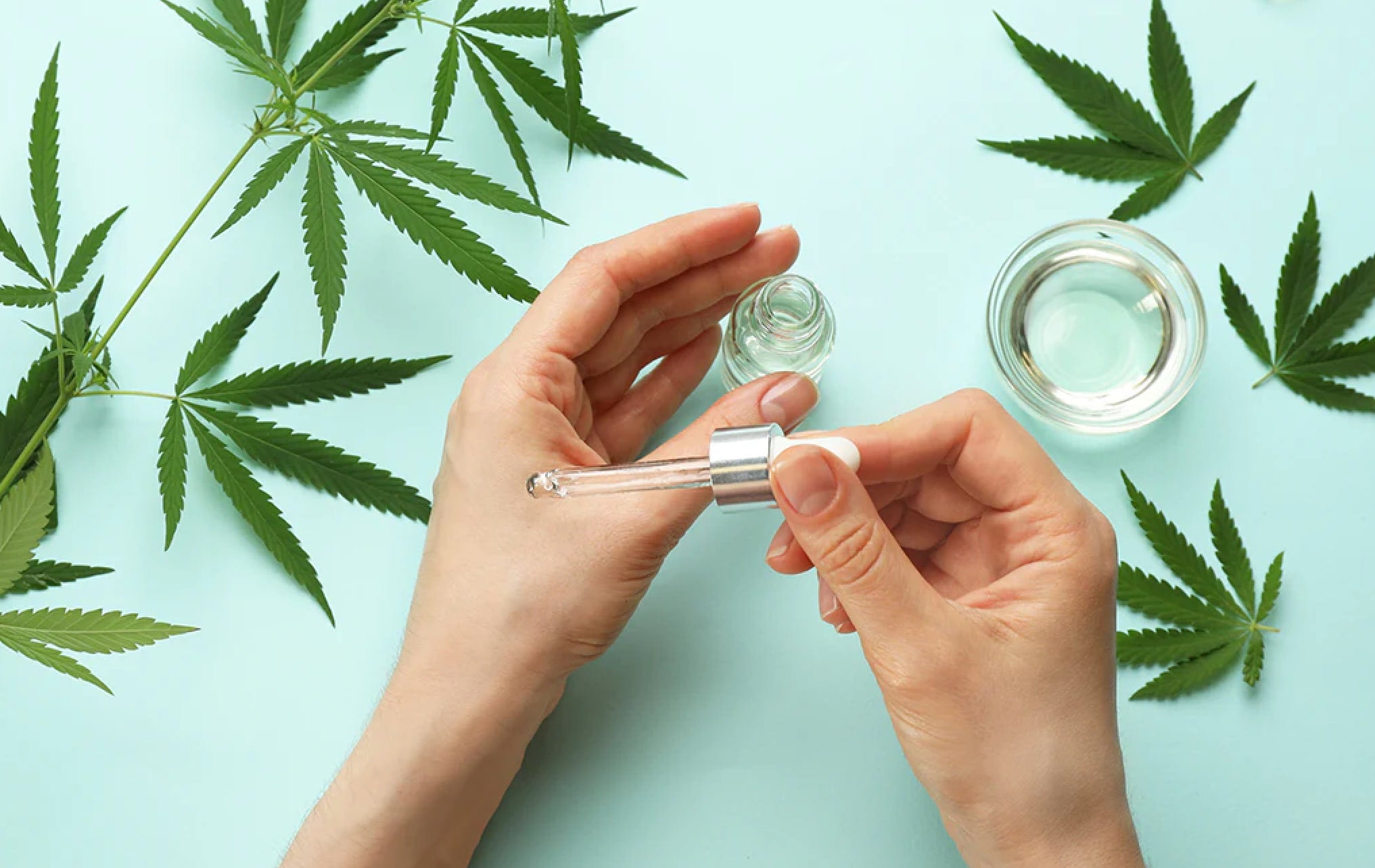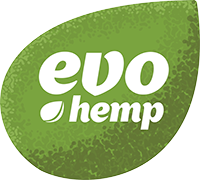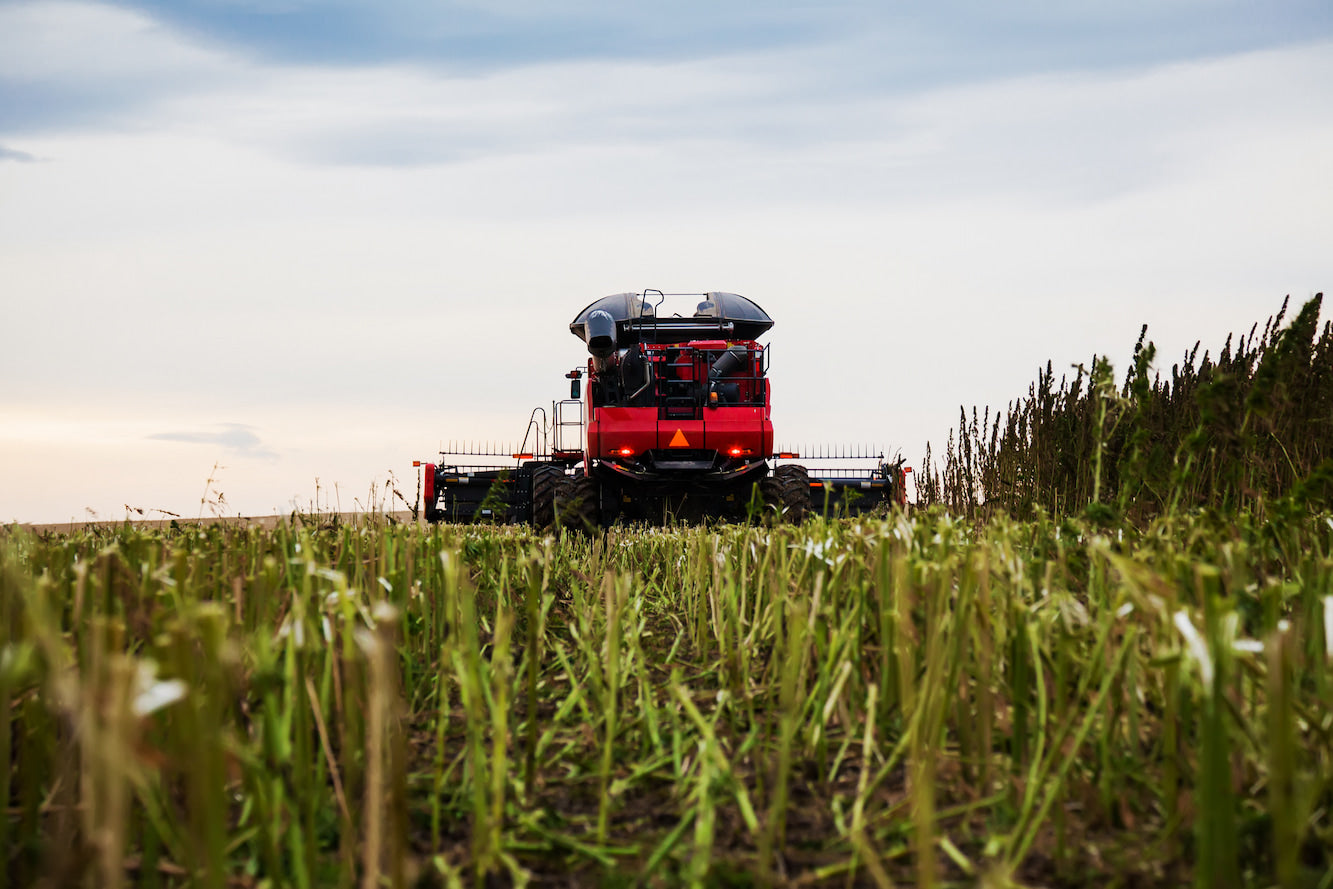CBD For Skin: What Are the Benefits?

As the days start to get colder, you may be feeling the effects all over, from your mood to your skin. From dry, flaky skin and cracked lips, to flare-ups and overall discomfort -- even those with the most thorough of skincare routines may be craving a little extra TLC for the body’s largest and most exposed organ.
Whether you have a full-fledged morning skincare routine, or you just rely on your trusty chapstick to get you through, incorporating CBD skincare products into your day could be just what your skin needs to look and feel great.
But can CBD really help hydrate and support healthy skin? Let evo hemp be your guide as we dive into it!
What Exactly Is CBD?
CBD, also known as cannabidiol, is one of the two main active ingredients found in the cannabis plant. Unlike THC -- the other most active ingredient -- CBD does not cause the psychoactive effects in the brain associated with being high.
Instead, CBD works within the body (as well as outside of the body!) to support a number of regulatory functions.
As a cannabinoid, CBD has a unique ability to work with the body’s endocannabinoid system (ECS), a complex networking system that sends chemical signals throughout the body using cannabinoid receptors (CB receptors), and enzymes. The ECS plays a role to help regulate mood, discomfort, sleep, and more.
What Does the Endocannabinoid System Do?
Discovered in the early 1990s, the ECS is ultimately responsible for helping the body maintain homeostasis. With CB receptors found in the brain, nerves, skeletal musicals, and a few major organs throughout the body, the endocannabinoid system can help support balance in a wide range of functions.
The most studied CB receptors are CB1 and CB2 receptors.
CB1 receptors are prominent in the brain, nervous system, and muscles, while CB2 receptors play a large role in the immune system. Both types of receptors interact with endocannabinoids (cannabinoids that are naturally produced by our bodies) to help bring balance to the body in different ways.
After providing support, the endocannabinoids are broken back down into their basic components by our body’s enzymes, and basically recycled for later use!
How Does CBD Affect the Endocannabinoid System?
The endocannabinoids produced in the brain, anandamide (AEA) and 2-arachidonoylglycerol (2-AG), bind with the CB receptors throughout the body to help provide relief where it is needed. In fact, cannabinoids are chemically similar to our endocannabinoids, so they are readily accepted into the endocannabinoid system.
While THC is thought to bind with CB1 and CB2 receptors just as endocannabinoids do, CBD is believed to strengthen the effects of existing endocannabinoids, basically supporting our body in doing what it needs to do to keep us in balance.
So, when CBD is absorbed into the body, our endocannabinoids have a little backup to get the job done, and their effects on our well-being are more pronounced.
How Does the Endocannabinoid System Relate to Skincare?
As the largest organ in the body, our skin cells are loaded with CB1 receptors. This means that the ECS is capable of sending endocannabinoids to and from skin cells to support healthy skin growth and repair.
The skin also contains loads of immune cells, as the immune system plays an important role in essentially monitoring the skin to keep out potentially harmful foreign objects, responding to breaks in the skin, and sending fatty acids in the skin to help nourish and fortify it.
With both types of receptors accessible within the skin cells, the ECS can help regulate healthy skin, respond to skin issues like dryness or irritation, provide protection when the skin is broken or irritated, and more.
How Can CBD Keep Skin Looking and Feeling Great?
As CBD can be easily incorporated into the ECS once absorbed into the body, the healing properties can affect the skin from the inside out. When CBD skincare products are applied topically to the skin, the cannabinoids instead work from the outside in, helping to soothe redness and irritation, and if blended with the right carrier oil, can also work to nourish dryness.
Help Ease Discomfort
When the skin is obstructed or sustains damage in some way, the immune system gets to work on trying to heal the area. The ECS is kicked into gear to help support the immune system.
Because CBD can support the beneficial effects of endocannabinoids, it is believed that CBD products can help support the body’s natural recovery process and feelings of discomfort.
Reduce the Appearance of Scarring and Blemishes
CBD body lotion will not only help bring some relief to feelings of discomfort, but may also be able to help reduce the visibility of previous skin damage.
When partnering with the endocannabinoids that connect with the immune-supporting CB2 receptors, CBD’s natural soothing properties paired with hemp oil’s nourishing antioxidants can help reduce the visibility of scarring.
CB receptors also exist in the sebaceous glands, which are responsible for producing oil in the skin. Research suggests that CBD can support the endocannabinoids responsible for helping to regulate the normal production of skin oil (sebum), ultimately helping to reduce the appearance of blemishes that stem from the overproduction of oil in the skin.
Help Reduce Visible Signs of Aging
Since CBD contains antioxidant properties, it can help the body combat free radicals that damage our skin as we age.
Free radicals are unstable molecules that can destabilize and destroy healthy skin cells by stealing their electrons. The presence of free radicals in our bodies can increase when we are overexposed to environmental stressors such as pollution, smoke, or intense sun. It also becomes more challenging for our bodies to fight off free radicals as we age.
When free radicals destroy skin cells, it can lead to sunspots, blemishes, wrinkles, and other visible changes associated with aging.
Antioxidants have the unique ability to donate electrons to free radicals without becoming unstable, themselves. This means that when a nourishing CBD oil is absorbed into the skin, its antioxidant properties can help protect the skin and combat these signs of aging.
CBD For Skin: What Else Should I Know?
CBD products come in two main forms: topicals and edibles.
CBD-infused topicals are applied directly to the skin, while edible forms of CBD are taken orally and ingested.
Common CBD topicals include lotions, balms, gels, and roll-ons. When it comes to using CBD for skincare, topicals are the most popular option. This is because the CBD in these forms is absorbed directly through the skin, where they can get to work right away, especially when they’re blended into nourishing hemp oil or mixed with other skin-healthy ingredients. This allows topicals to directly target areas of the skin that need soothing and hydrating.
Edible CBD options include supplements, crystals, and gummies. Because edibles need to be ingested before reaching the bloodstream, their effects can take longer to kick in. This is typically between 15 minutes to an hour. However, edibles are more effective at providing full-body support, meaning they’ll work from the inside out to soothe skin irritation and deliver antioxidant effects.
Ultimately, edibles can be an excellent tool for delivering antioxidant and soothing effects for the skin from the inside out, while topicals are your best bet for targeting dry, irritated skin and providing some direct relief.
How Long Until I Feel the Effects of a CBD Topical?
A major appeal of CBD topicals is how it absorbs quickly, as CBD applied directly to the skin does not have to pass through the digestive tract and bloodstream to exert its effects.
If you are using CBD to help soothe dry skin or get a little relief, you can often feel the effects of CBD within just a few minutes, especially when blended with stimulating ingredients like menthol that can start to cool irritated skin as soon as it’s applied.
It’s worth noting that if you’re using CBD for more long-term support, such as trying to rehydrate the skin or stave off the visible effects of aging, this support comes with continued use, not overnight.
What Do I Need To Know About Dosage and Potency?
The amount of ingestible CBD it takes to feel the effects varies from person to person.
For beginners, it is best to start with a lower dose and work your way up until you find what fits you and your needs best.
When it comes to edibles or oils, 10mg of CBD per one mL serving is considered a low-dose product, while 20 mg per one mL is considered average.
For topicals, an average potency is considered three to eight milligrams of CBD per suggested dosage, or 100-500mg of CBD per ounce — that said, because topical CBD doesn’t make it into your bloodstream, you can really use however much of it as you’d like. You can’t overdose on topical CBD.
When considering potency, you’ll also want to be mindful of the other ingredients in a product, as these can be vital for boosting the CBD’s bioavailability.
Bioavailability measures how much CBD is absorbed into the body compared to how much is excreted or metabolized. If the body cannot absorb enough of a product, you will likely miss out on its effects. Because CBD is fat-soluble, it requires fat to dissolve into a form that the body can easily absorb, which is why it’s so beneficial to take it in oil form, or with a meal.
With topical CBD, on the other hand, bioavailability doesn’t really apply since the CBD isn’t being metabolized inside of your body.
What Is the Difference Between Full-Spectrum, Broad-Spectrum, and Isolated CBD?
When choosing a CBD product, you’ll want to know the difference between full-spectrum, broad-spectrum, or isolated CBD.
Full-spectrum CBD contains all of the nourishing plant parts found in the hemp plant, including the terpenes, flavonoids, and the federally-legal amount of THC, which is under 0.3%.
While the THC in full-spectrum products is not enough to get you high, it can help to enhance the benefits of CBD — not because it’s psychoactive, but rather because all of hemp’s plant nutrients work better when they’re working together (i.e. the way nature intended!).
However, if you prefer a product with no trace of THC, look for broad-spectrum or isolated CBD, both of which have no THC at all. Broad-spectrum CBD contains all plant parts besides THC, while CBD Isolate is pure CBD extract, with no other part of the hemp plant included.
Which CBD Product Is Best for Me?
While choosing a CBD product primarily comes down to personal preference, you’ll want to look out for a few things.
Always check that a product is tested by a third party for quality assurance. A Certificate of Analysis is available with the product’s full potency results (our Certificates of Analysis can be found on each of our product pages — just scroll down to the Product Testing section!).
You’ll also want to consider:
- What you are planning to use CBD for — a topical CBD roll-on can target discomfort directly to provide relief, but it won’t work to help you sleep
- The dosage and potency of the product — do you just need a regular potency for daily use, or do you need a little extra strength?
- What other active ingredients are included — is CBD blended with other relieving ingredients like menthol or calming ingredients like lavender?
- The product’s aroma and flavor — do you need a flavored tincture or can you enjoy CBD’s natural earthy flavor?
- How the CBD is sourced — we source ours from indigenous farms right here in Colorado
- Whether you’d prefer a full-spectrum, broad-spectrum, or isolated CBD product (more often called CBD isolate)
If you’re not sure where to start, we’re here to help. We have a whole Hemp Academy that can get you the basics so you have some background knowledge to help guide what you buy!
For Dry Skin and Lips: A Soothing Balm
A CBD based oil can do wonders for your lips. At evo hemp, our full-spectrum CBD Hemp Seed Oil brings added hydration and aromatherapeutic boost to help you feel calm and relaxed through the day. This topical can be reapplied throughout the day as needed.
For Irritated Skin or Localized Discomfort: A Calm and Cooling Oil
Mixed with essential oils, a CBD Hemp Seed Oil is simply rolled across and massaged into whatever area of the body (externally) is in need of extra relief. It can even be applied onto the fingers and rubbed into the temples to help reduce feelings of tension when the work day has just gone a little too long.
Our CBD Hemp Seed Oil is infused with hemp seed oil to hydrate and help the skin retain moisture. Then, essential fatty acids boost the nourishing properties of this ultra-calming topical.
Conclusion
Whether you are looking to help nourish dry skin, relieve a little tension, fight the signs of aging, or simply add a little more oomph into your self-care regime, CBD can be of service.
With so many wellness benefits, it’s no wonder that CBD can be found as an ingredient in such a wide range of products.
At evo hemp, we love finding new and exciting ways to help you reap the benefits that CBD has to offer — in fact, we’re on a mission to spread the health benefits of hemp as far as we can while benefiting indigenous cultures through its cultivation.
Check out our story here, or if you’re looking for more ways to incorporate this versatile gift of nature into your life, explore our hemp-based food and wellness products here.
Sources:
FDA Regulation of Cannabis and Cannabis-Derived Products, Including Cannabidiol (CBD) | FDA
Therapeutic Potential of Cannabidiol (CBD) for Skin Health and Disorders | NIH
- Tags: CBD



